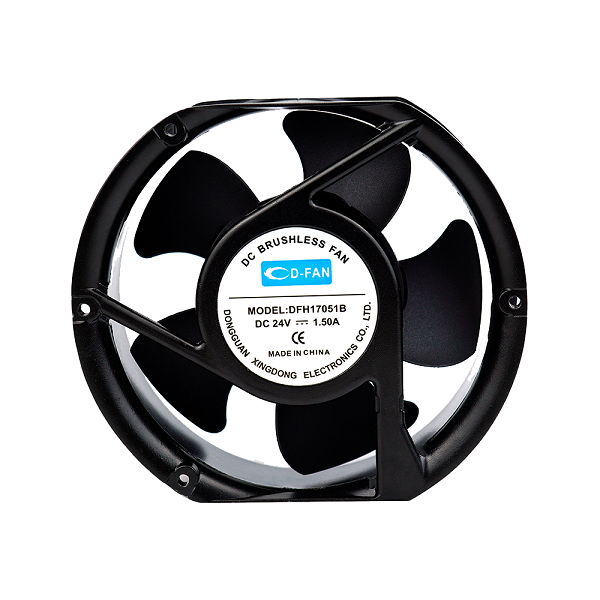With the advancement of technology, the technology and performance of cooling fans are also constantly developing and improving. At present, the specifications and dimensions of heat dissipation fans range from a few millimeters to several hundred millimeters, and there are various voltage options, such as 5V, 12V, 24V, etc. In addition, there are also various shapes of heat dissipation fans, such as square, circular, olive shaped, etc.
In modern home life, technological progress has not only changed our way of life, but also improved our quality of life. The emergence of smart toilets is undoubtedly a major innovation in the bathroom field. They are equipped with heating seats, warm air drying, automatic flushing and other functions, making users feel extremely comfortable during use while effectively reducing the risk of infection caused by unclean bathroom facilities.
In the fast-paced modern life, the emergence of dishwashers has brought about earth shattering changes in our home life. Washing dishes is a tedious and time-consuming task that requires us to personally clean every dish, dry it, and store it in the sun.
The emergence of drones has provided us with new ways and perspectives to understand things. In the past decade, their applications have become increasingly popular. The express delivery industry, film and television shooting, monitoring and inspection, transportation, agriculture, forestry, police security, surveying and mapping, and other fields have shown a significant increase in demand for drones.
Date: 2024.04.07
View: 885
When it comes to cooling solutions for various applications, DC axial fans play a crucial role in ensuring efficient airflow and heat dissipation. From electronics cooling to industrial ventilation, choosing the right DC axial fan can significantly impact the performance and longevity of equipment. In this comprehensive guide, we'll delve into the key features to consider when selecting a DC axial fan, comparing them with their AC counterparts and highlighting the specific advantages of 90×90mm DC axial fans.
DC axial fans are air-moving devices that utilize direct current (DC) to power the motor and drive the rotation of blades, generating airflow parallel to the fan's axis. These fans are widely used in electronics cooling, HVAC systems, industrial equipment, and automotive applications, offering efficient and reliable cooling solutions.
When choosing a DC axial fan, one of the first considerations is the size and dimensions of the fan. Fans come in various sizes, ranging from small compact models to larger industrial-grade units. For applications with space constraints or specific airflow requirements, selecting the appropriate fan size is essential.
In comparison to AC axial fans, DC axial fans often come in smaller sizes, making them suitable for compact electronic devices and tight spaces. However, 90×90mm DC axial fans strike a balance between size and performance, offering sufficient airflow and cooling capacity while fitting into smaller enclosures.
The airflow and static pressure capabilities of a DC axial fan determine its cooling performance and suitability for different applications. Airflow refers to the volume of air moved by the fan per unit of time, while static pressure measures the fan's ability to overcome resistance and maintain airflow in ducts or restricted spaces.
When evaluating DC axial fans, look for specifications such as cubic feet per minute (CFM) for airflow and millimeters of water gauge (mmWG) for static pressure. Higher CFM and static pressure ratings indicate better cooling performance and versatility, especially in challenging environments or applications with airflow restrictions.

Noise level is another crucial factor to consider, particularly in applications where quiet operation is essential, such as office environments, audio equipment, and residential appliances. DC axial fans typically produce less noise compared to their AC counterparts, thanks to advanced motor designs and noise-reducing technologies.
When selecting a DC axial fan, pay attention to the manufacturer's noise rating in decibels (dB). Lower dB values indicate quieter operation, ensuring minimal disturbance to users or occupants. Additionally, consider features such as PWM (Pulse Width Modulation) control or fan speed profiles to adjust the fan's speed and noise level as needed.
DC axial fans offer energy-efficient cooling solutions compared to AC axial fans, thanks to their direct current operation and variable speed control options. By adjusting the fan's speed or using PWM control, users can optimize power consumption based on cooling requirements, reducing energy costs and environmental impact.
When comparing DC axial fans, look for efficiency metrics such as CFM per watt or airflow efficiency index (AEI). Higher efficiency ratings indicate better performance per unit of power consumed, maximizing cooling effectiveness while minimizing energy usage.
In industrial or harsh environments, durability and reliability are critical considerations when selecting a DC axial fan. Look for fans constructed from high-quality materials such as aluminum or thermoplastic, with features such as dust and moisture resistance for long-term performance.
Additionally, consider factors such as bearing type (e.g., ball bearing, sleeve bearing) and motor lifespan when assessing the fan's reliability. Ball bearings typically offer longer service life and higher reliability, making them suitable for continuous operation and demanding applications.
When choosing a DC axial fan, it's essential to consider key features such as size, airflow, noise level, power efficiency, durability, and reliability. By selecting the right fan based on these criteria, users can ensure optimal cooling performance, energy efficiency, and long-term reliability for their specific applications.
Whether cooling electronics, HVAC systems, or industrial equipment, 90×90mm DC axial fans offer a versatile and efficient solution for various cooling needs. With their compact size, quiet operation, and power efficiency, DC axial fans continue to be a preferred choice across a wide range of industries and applications.